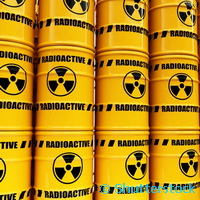EU project plays key role in making nuclear power safer
Impressive steps have been taken to ensure that accident prevention measures in European nuclear power plants (NPP) are as tight as they can be. Nonetheless, accidents can still happen. An EU-funded network has helped to establish Europe as a world leader in the field. When accidents occur in sensitive environments, such as a nuclear power plant, they can have devastating consequences: core melting, plant damage and subsequent dispersal of radioactive materials into the environment. The 2011 accident at the Fukushima nuclear power plant in Japan strongly underlined the need for constant vigilance over nuclear safety. One means by which this has been encouraged in Europe has been through the SARNET ('Severe Accident Research Network of Excellence') network, which has worked to improve knowledge on Severe Accidents (SA), coordinate research resources, and share and disseminate data. In recent years, European end-users have mostly used integral computer codes developed in the United States for running safety assessments, resulting in a strong dependence on US technology. By fostering collaborative work on the Accident Source Term Evaluation Code (ASTEC) SARNET has succeeded in consolidating Europe's role as an independent world leader in this field. This code can be applied to the accident operation of any kind of water-cooled nuclear power plant. It simulates an entire SA sequence in a nuclear water-cooled reactor, from the initiating event through to the release of radioactive elements out of the containment. The SARNET2 project, which was a follow-up to the previous SARNET project, addressed a selection of the highest-priority unresolved issues and uncertainties over how to enhance the safety of existing and future water-cooled NPP. This was largely accomplished through optimising available resources, sharing experiences and encouraging new forms of partnerships. For example, the project managed to reduce the fragmentation between different national R&D programmes, notably in defining common research programmes and developing common computer tools and methodologies for NPP safety assessment. The project is likely to have a lasting impact not only on the European nuclear safety organisations, but also on the European nuclear industry as a whole. Its key deliverables - ASTEC, safety methodologies and recommendations from state-of-the-art reports can now be used not only for R&D activities, but also for a variety of industrial applications. This is one reason why European industry and safety authorities have played such a vital contributing role in SARNET2. The hope is that SARNET role as reference for SA research priorities will be consolidated and will help to influence national programmes and funding in the future. All research activities in this field can now be effectively coordinated by the SARNET network, which will contribute to optimising the use of European resources. The network can also provide a wide panel of competencies for supporting other countries to ensure that their nuclear power capabilities are safe and adequately monitored. The project also published a text book on severe accident phenomenology, ran a number of education and training programmes and developed working relationships with educational institutions. This helped to raise the profile of this cutting-edge area of research among students and young researchers. Furthermore, a periodic review of priorities and co-programming among participating organisations helped to influence budgetary considerations.For more information, please visit: SARNET http://www.sar-net.eu
Countries
France



